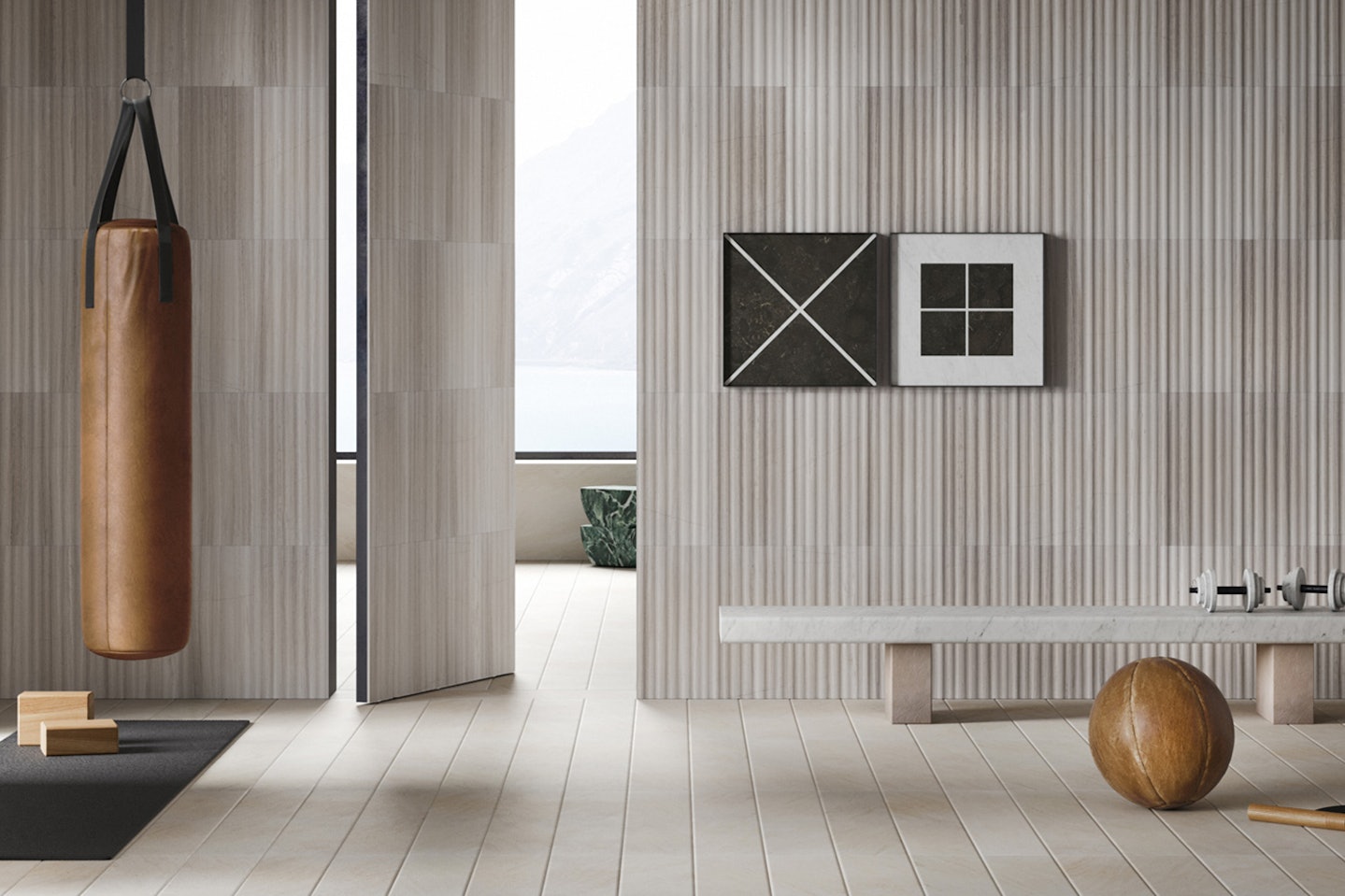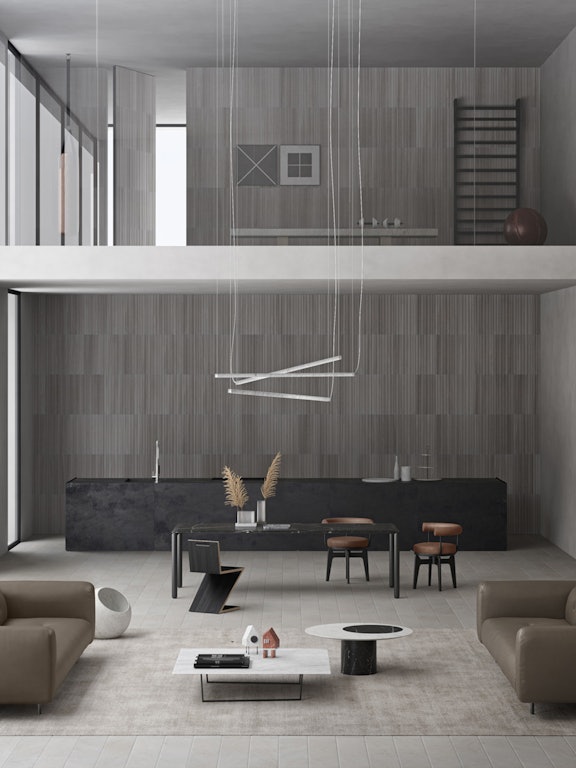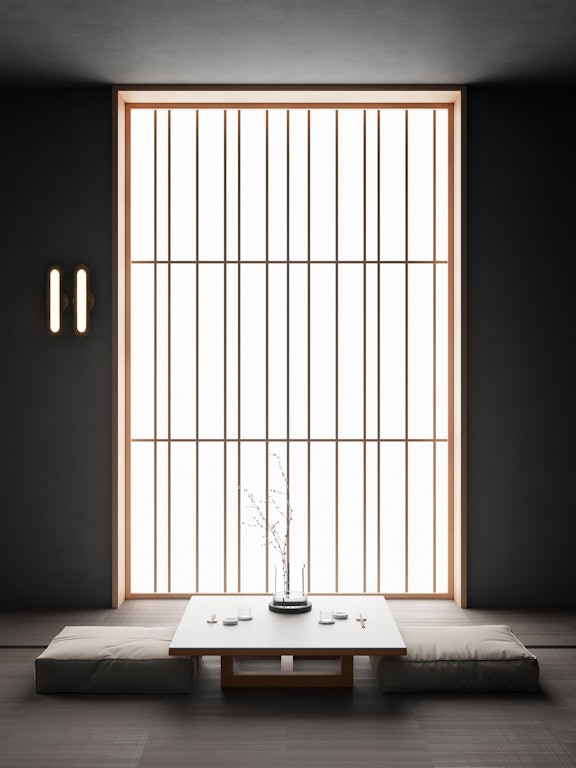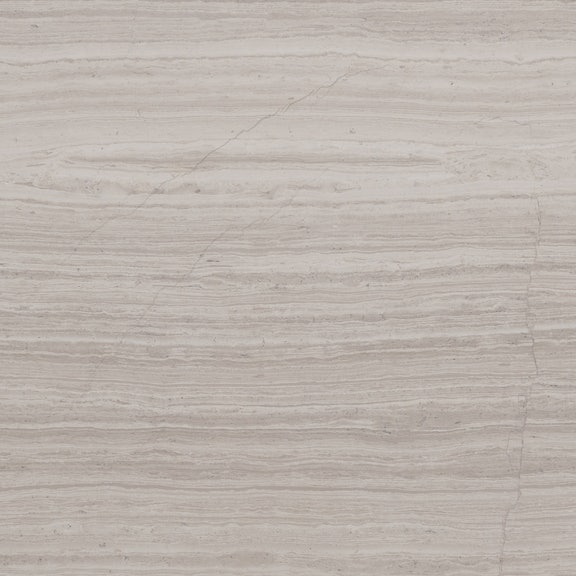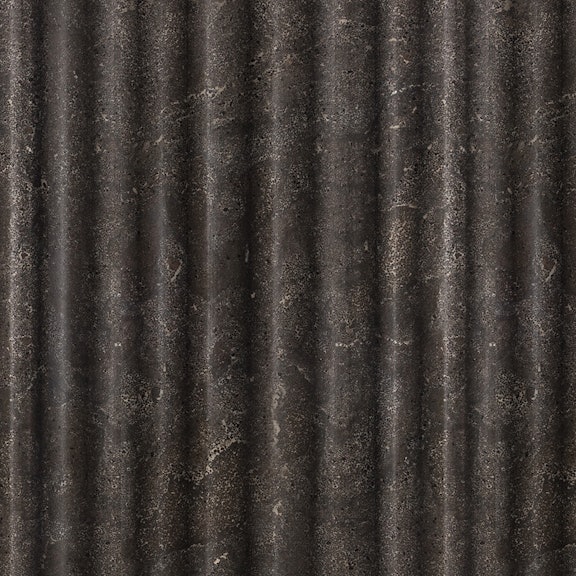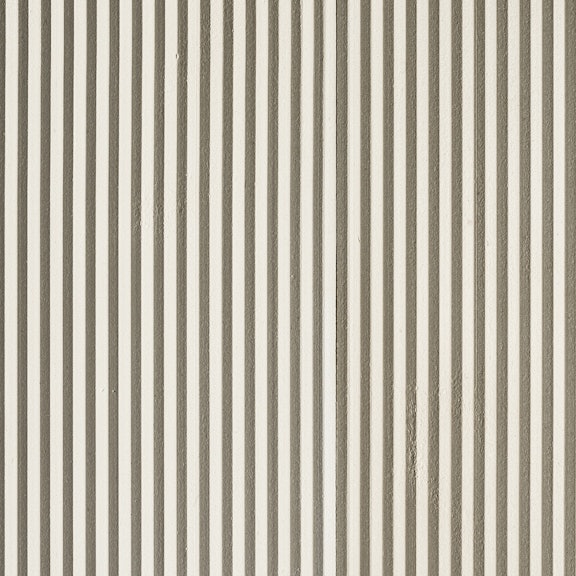All you need to know about opening up natural stone tiles and drying them
03.2022
Discover why simple steps such as opening up boxes of tiles or even drying them are fundamental to a smooth laying process
The essential preparation before laying natural stone tiles
How you open the crates or cases containing your tiles and then dry them may seem a banal matter but these two seemingly simple activities are actually an important step. Paying attention to how you carry them out can make a significant difference to the smooth running of the entire installation process.
The steps we set out in this article are designed to minimise any delays and reduce stress points. Forewarned is forearmed, as they say, and the more informed you are about what to expect when your material arrives, the better it is all round.
On this note, one of the main things that often surprises clients when they receive their tiles and open up the box is to discover that they are damp and seem to be darker than expected. There is a very simple reason for this, however, which is that when natural stone is cut or worked to create our innovative textures, it is exposed to a constant spray of water. The tiles are then checked and placed directly in their packaging which means they often arrive still damp, but once they dry out completely, the original colour returns.
With that said, let’s take a look at how to best prepare for the laying process in terms of removing the tiles from their packaging and getting them dry.
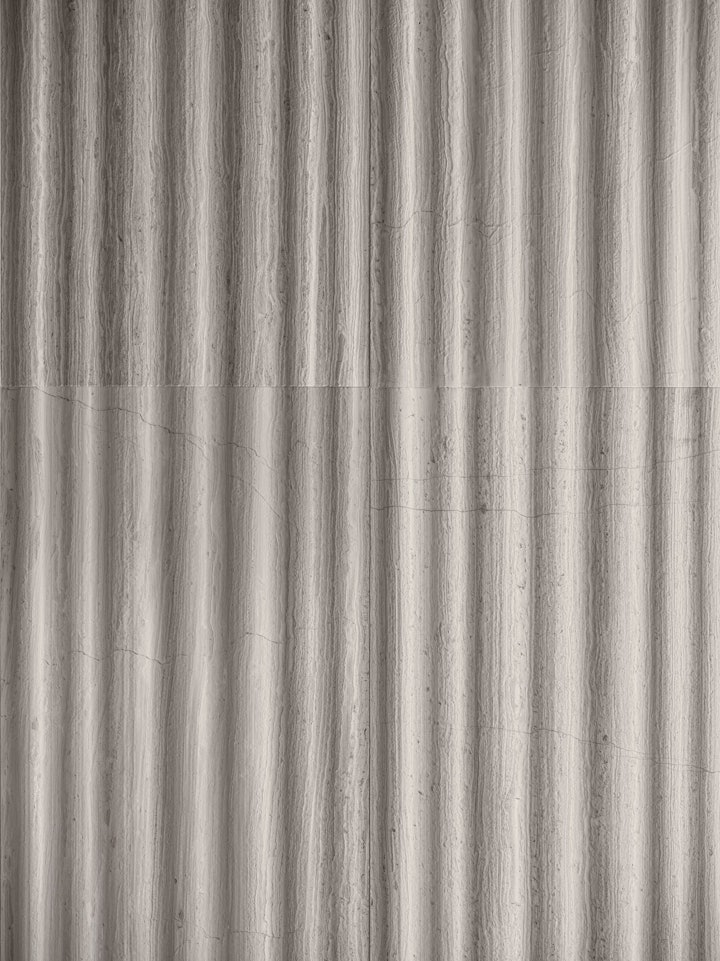
How stone tiles are packaged
Before we talk about how to open up the tiles, we wanted to first explain how we package them as this may be helpful in understanding the importance of steps such as drying them.
Firstly, we place substantial attention on sorting the tiles by colour, grouping them in such a way that a crate contains material of a similar shade. This means that the end result, once they are laid, will be as uniform as possible, rather than having dramatic variations in tone. Natural stone is, by its very nature, unique, with no two blocks or slabs being identical. Every stone taken from the same quarry can vary in shade and this is why we select the tiles we send with care, seeking to create a coherent look across colour and veining.
As the tiles come off our machines, every single one is checked by hand, colour graded and placed in packaging which differs depending on the size and type of tile. Stone is, of course, a tough material once installed, but transporting thin tiles around the world calls for appropriate protection.
As such, we have designed our packaging to minimise the risk of breakage, cracks or chipping during shipping, using plenty of padding and a variety of solutions, including wooden crates for larger formats.
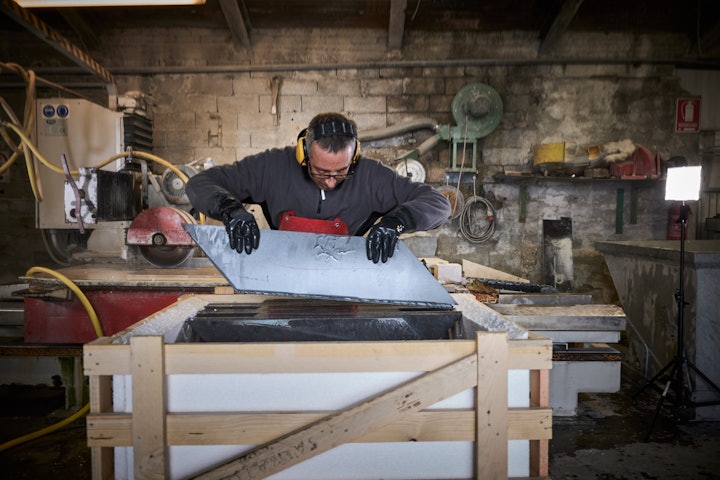
How to open crates or boxes of stone tiles
Crates or boxes are usually opened shortly before they are laid as all it takes is a quick glance to understand how Crema d’Orcia or Bianco Carrara can create gorgeous floors or how Pietra d’Avola brings elegance and character to walls. However, this is a crucial moment that should not be treated lightly.
Wherever possible, you should open up the packaging containing your tiles only when it is in situ, ie in the location the tiles will be laid. Ideally, you want to store them somewhere safe where they are unlikely to be accidently damaged by tradespeople or moving objects.
Once you have found a place for your boxes or crates on the worksite, close to where they will be installed but out of the way of other activity, you should then open them up.
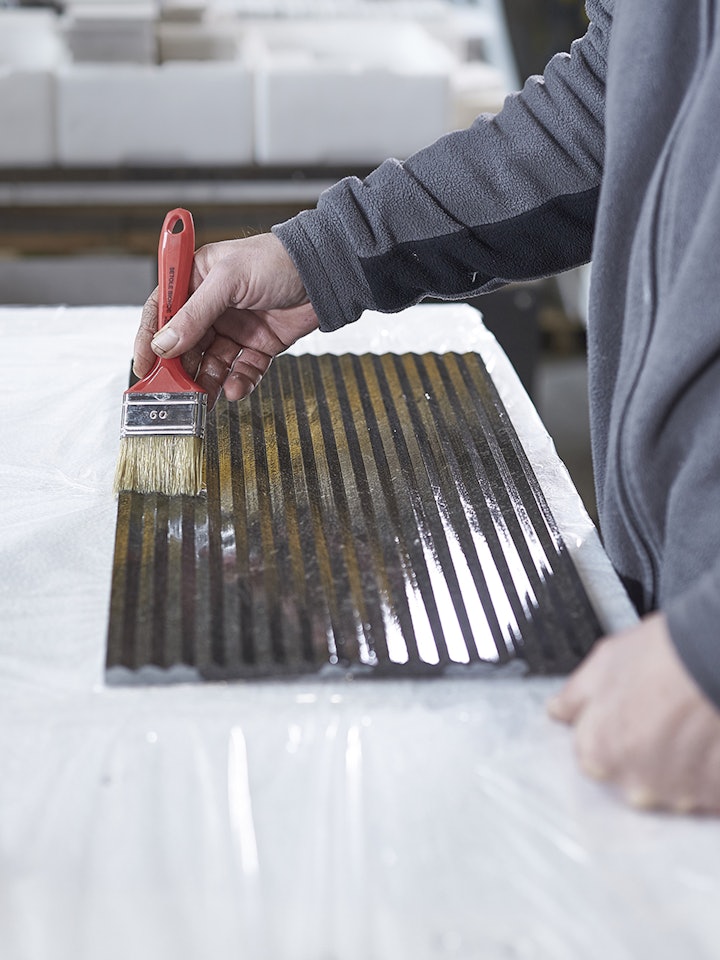
How to dry damp stone tiles before they are laid
Let’s know move on to how to dry your tiles if they are damp when you remove them.
As we explained above, water is a fundamental element when it comes to cutting and working stone, and because tiles are placed directly into their packaging once they have been cut and checked, it is not unusual to discover that they still wet when a client receives them.
A by-product of the presence of moisture is that the stone will seem darker, causing many a flutter among clients because it is different to the lovely shade of grey, cream or brown they had so carefully selected.
In this case, you should remove the tiles from the packaging and line them up along the walls, overlapping them and using bits of the packaging as padding between each piece. The air will circulate around them and dry them naturally.
If time is off the essence, however, you can speed up the drying process using a heat gun, which is an indispensable tool for any tile layer.
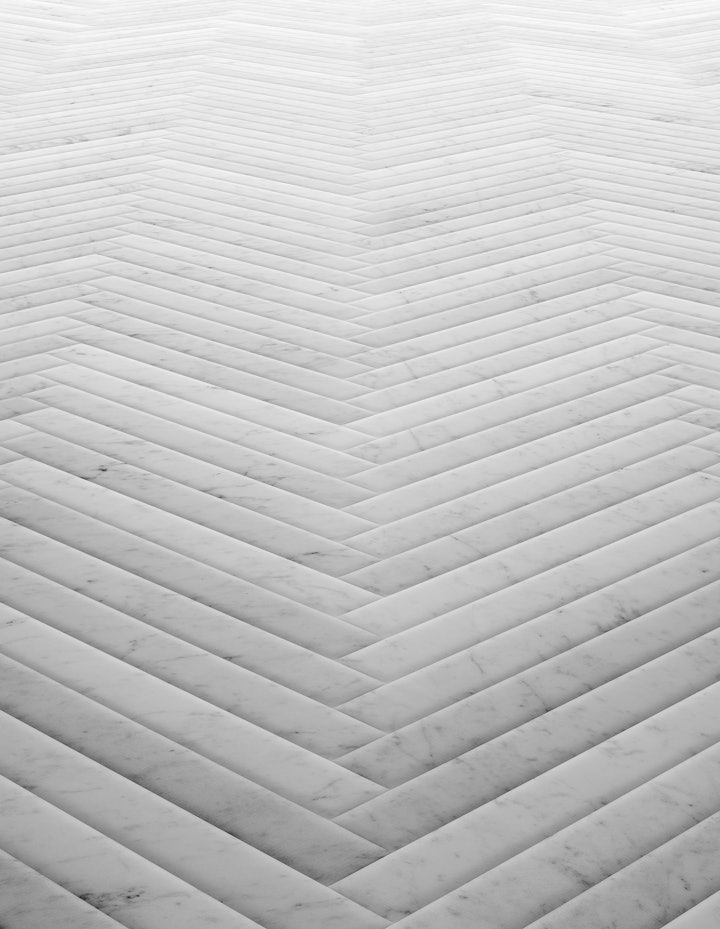
A heat gun and its use in drying stone tiles
If you are not familiar with a heat gun, the easiest way to describe it as a super-hot hairdryer, meaning that while it is highly effective, there is also a slightly higher of risk involved.
Like a hairdryer, both the air flow and heat can be adjusted when you use a heat gun, but here the similarities end. You need to know how to choose the right combinations of temperature and flow when you are directing the heat towards natural stone. If it is too hot or too close, you will end up damaging the tile’s surface, inevitably leading to delays and additional costs for replacement material and delivery.
For these reasons, and to reduce the risk of personal injury, we would always recommend that you avoid using a heat gun to dry your tiles, and entrust this task to a professional who is used to working with this tool.
We would extend the same advice for the entire process, and advise choosing a company that delivers a 360-degree service when it comes to stone, from working with it to providing laying assistance and support in terms of ongoing care and maintenance.
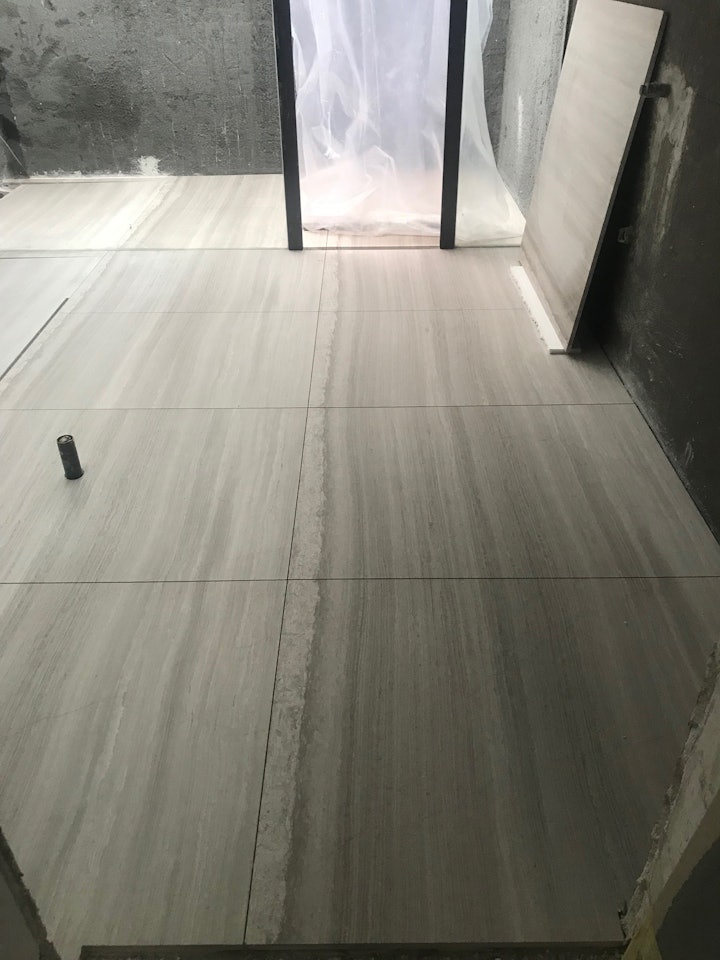
The next step is laying your beautiful stone tiles
Now that the material is dried, you will note that it has regained its original colour and you are now ready to start laying your lovely stone tiles and enjoy your gorgeous walls or floors.
Natural stone is a material that never ceases to charm, and part of this is undoubtably down to the fact that it evokes the majestic beauty of its origins. The climate, the location and the conditions of the territory from which it is extracted all come together to create extraordinary gifts of nature, where every single block is unique and contains its own fascinating history.
In turn, every tile is also different from another, with variations in colour and veining that makes it truly special, and this is something that the more homogeneous materials such as porcelain and ceramic simply cannot replicate.
Whether you choose a classic marble such as timeless white Bianco Carrara, or a striking dark limestone such as Pietra d’Avola, natural stone never fails to deliver a wow factor. It is also extremely versatile, lending itself to a myriad of elegant textures that bring depth, style and personality to any space.
At Salvatori, we have worked with natural stone for over seven decades, transforming it into beautiful and surprising finishes, accessories and items of furniture.
We work with our clients to find the perfect stone and product for their project, no matter how big or small, sharing not only our experience with this wonderful natural material, but also our passion for understated and elegant design.
We are always happy to provide advice on any aspect, from the choice of stone to laying it and adding the finishing treatments that ensure it will remain as beautiful in decades to come as it is today. If you have any questions at all, please get in touch and one of our experts will be delighted to help.
